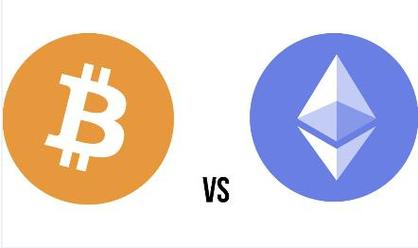Bitcoin and Eth Accepted Here: A Comprehensive Guide
Are you looking to embrace the digital revolution by accepting Bitcoin and Ethereum as payment for your goods or services? You’ve come to the right place. In this detailed guide, we’ll explore the ins and outs of integrating these cryptocurrencies into your business, covering everything from the basics to advanced strategies.
Understanding Bitcoin and Ethereum
Before diving into the practical aspects of accepting Bitcoin and Ethereum, it’s essential to understand what these cryptocurrencies are and how they work.

Bitcoin is the first and most well-known cryptocurrency, created in 2009 by an anonymous person or group using the pseudonym Satoshi Nakamoto. It operates on a decentralized network called the blockchain, which records all transactions in a public ledger. Bitcoin is known for its limited supply, with a maximum of 21 million coins that can be mined.
Ethereum, launched in 2015, is a blockchain platform that enables the creation of decentralized applications (DApps) and smart contracts. Unlike Bitcoin, Ethereum uses a different consensus mechanism called Proof of Stake (PoS), which is more energy-efficient than Bitcoin’s Proof of Work (PoW) system.
Why Accept Bitcoin and Ethereum?
There are several reasons why you might want to accept Bitcoin and Ethereum as payment:
- Increased Sales: By accepting cryptocurrencies, you open your business to a global customer base that may prefer digital payments.
- Reduced Transaction Fees: Cryptocurrency transactions often have lower fees compared to traditional payment methods, such as credit cards.
- Security: Blockchain technology ensures secure and transparent transactions, reducing the risk of fraud.
- Future-Proofing: As the world becomes more digital, embracing cryptocurrencies can position your business as forward-thinking and adaptable.
Setting Up to Accept Bitcoin and Ethereum
Now that you understand the benefits of accepting Bitcoin and Ethereum, let’s look at how to set up your business to do so.

1. Choose a Cryptocurrency Wallet
A cryptocurrency wallet is a digital tool that allows you to store, send, and receive cryptocurrencies. There are various types of wallets, including software wallets, hardware wallets, and web wallets. Here are some popular options:
| Wallet Type | Example | Best For |
|---|---|---|
| Software Wallet | Exodus | Beginners and those looking for ease of use |
| Hardware Wallet | Trezor Model T | High-security needs and long-term storage |
| Web Wallet | MetaMask | Accessing DApps and managing Ethereum-based assets |
2. Select a Payment Processor
A payment processor is a service that facilitates the conversion of cryptocurrency into your preferred fiat currency. Here are some popular payment processors:
- BitPay: Offers a range of services, including invoicing and point-of-sale (POS) solutions.
- Coinbase Commerce: A simple and secure way to accept Bitcoin and Ethereum on your website.
- BlockFi: Provides a payment gateway and offers interest on your cryptocurrency holdings.
3. Integrate Cryptocurrency Payment Options
Once you have a wallet and payment processor, it’s time to integrate cryptocurrency payment options into your business. Here are some ways to do so:
- Online Store: Add cryptocurrency payment options to your e-commerce platform.
- POS System: Use a compatible POS system to accept cryptocurrency payments in person.
- Mobile App: Develop a mobile app that allows customers to pay with Bitcoin and Ethereum.
4. Market Your Cryptocurrency Payment Options
Once you’ve set up your cryptocurrency payment options, it’s crucial to market them to your customers. Here are some strategies:
- <



